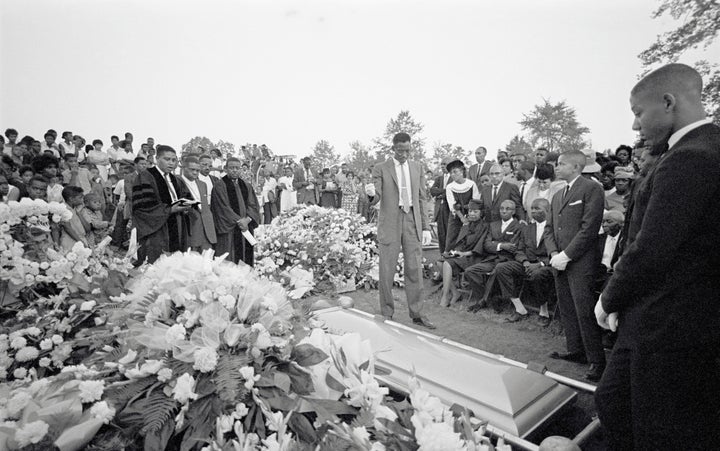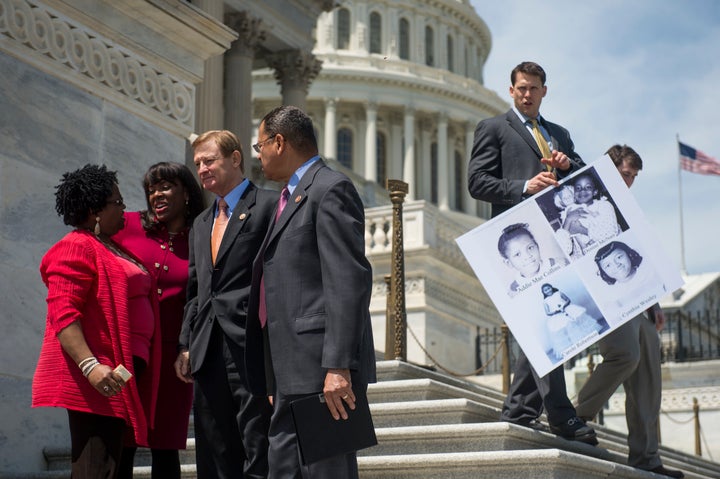
Eleven-year-old Denise McNair asked Addie Mae Collins, 14, to tie her sash. Carole Robertson and Cynthia Wesley, both 14, also adjusted their dresses in the ladies’ lounge of Birmingham’s 16th Street Baptist Church as they prepared for a youth worship service to start in the upstairs sanctuary. It was just another Sunday on September 15, 1963.
Moments later a blast ripped through the room, killing all four and severely injuring Sarah Collins, Addie Mae’s younger sister. Earlier that morning, under the cover of darkness, Klansmen Thomas Edwin Blanton Jr., Robert Edward Chambliss and Bobby Frank Cherry had planted a bomb under the stairs outside the restroom window.
The horror of that act of cowardice and domestic terrorism hasn’t faded in 54 years. With the resurgence of white supremacists and neo-nazis and acts of racial violence, it is natural to look back and ask, what can we learn from this ugly chapter of our history?
“The horror of that act of cowardice and domestic terrorism hasn’t faded in 54 years.”
Reduced to four words, one lesson is this: Violence often follows hope.
The bomb was a desperate act of fear as well as hate, by men who saw their segregated way of life slipping away and sought to crush the hope they saw rising.
For years, this pattern has reasserted itself. The 1954 Brown vs. Board of Education ruling offered hope of an equal education. But when civil rights leader Fred Shuttlesworth sought to enroll four children in all-white Phillips High School three years later, he was met by a mob of 200-300 Klansmen, including Bobby Frank Cherry, who attacked him and his wife with chains, clubs and brass knuckles.
We saw it in the bombings of the homes of civil rights attorney Arthur Shores and others.
But why would the Klan attack the 16th Street Baptist Church? And why on a day devoted to youth?
It was because that church served as the staging area for the climactic “Children’s Crusades” in May of 1963, led by Rev. Shuttlesworth and Dr. Martin Luther King Jr. These were the marches in which journalists captured images of the kids being attacked by Police Commissioner Bull Connor’s police dogs and fire hoses.
Connor had put the ugliness of Jim Crow on full, undeniable display. Birmingham’s business leaders agreed to end the marches by desegregating restrooms, drinking fountains and lunch counters. The measures were modest, but they gave hope.
Hope also came from Washington D.C., where President Kennedy responded with his famous civil rights speech. August brought Dr. King’s “I Have A Dream” speech.
Back in Birmingham, hope continued to soar when the federal courts ordered Birmingham’s schools to desegregate.
It was more than the Klan could take. And once more, violence followed hope ― this time in the form of dynamite under a church stairway.

Despite a tremendous investigative effort by the FBI, no charges were filed in the bombing until 1976, when Alabama Attorney General Bill Baxley indicted Robert “Dynamite Bob” Chambliss for the murder of Denise McNair. I skipped law school classes the following year to watch the trial, in which Chambliss was convicted of first-degree murder.
As I sat in the balcony taking in the drama of the Chambliss trial, I had no way of knowing that 24 years later I would have the opportunity to finish the job. In 1997, I was appointed U.S. Attorney for the Northern District of Alabama, and new evidence had come to light in the intervening years. Bobby Frank Cherry’s granddaughter, an ex-wife and others testified that he had bragged about his role in the bombing. Blanton and Chambliss had been seen near the church steps two weeks earlier. Investigators also found a tape in which Blanton talked about the building of the bomb.
The FBI’s excellent work and a talented team of prosecutors enabled us to try and convict Blanton and Cherry for the murders. The “4 little girls,” as Spike Lee described them in his documentary of the same name, and their families finally had a measure of justice.
“We cannot sweep this violence under the rug. We must address the forces that lead to it and prosecute those who perpetrate such acts.”
By the time the men were convicted in 2001 and 2002, Birmingham and Alabama had changed for the better. The Civil Rights Act of 1964 and the Voting Rights Act of 1965 made it possible for African Americans to gain basic rights they had long been denied. The civil rights movement extended that hope to other marginalized communities.
Sadly, the pattern of violence as a response to hope has reasserted itself. We saw it in the Charleston church massacre in 2015. We saw it on display in Charlottesville this past August. We’ve seen it in the attacks on mosques and synagogues, and against the LGBT community. We see it in the hostility toward the Latino community. We cannot sweep this violence under the rug. We must address the forces that lead to it and prosecute those who perpetrate such acts.
America is a nation of laws, justice, equality and opportunity, and we must push back against those who threaten those fundamental American values.
Hope is durable but not invincible. It represents the best of what America is about, and we all suffer if we fail to protect it.
